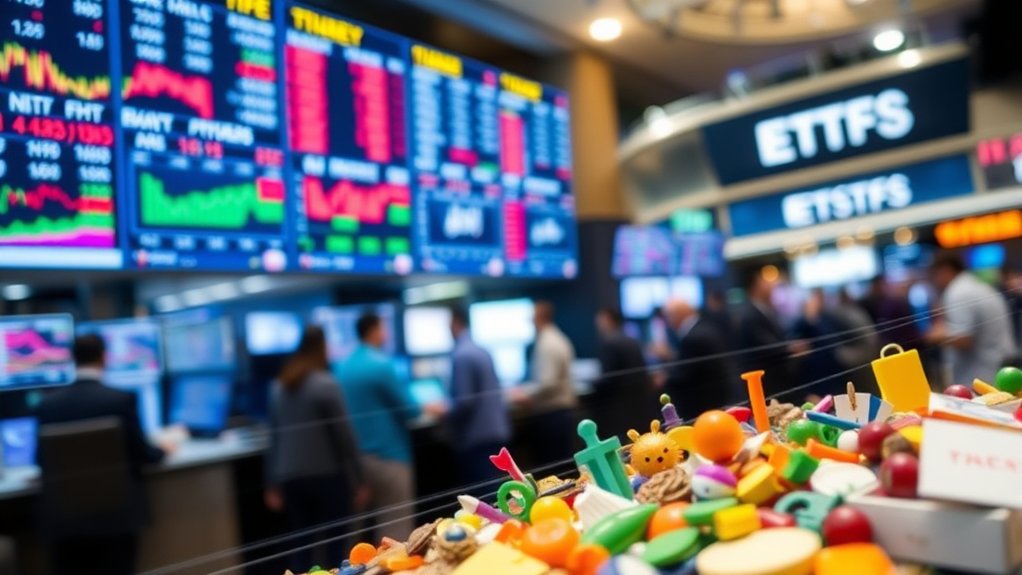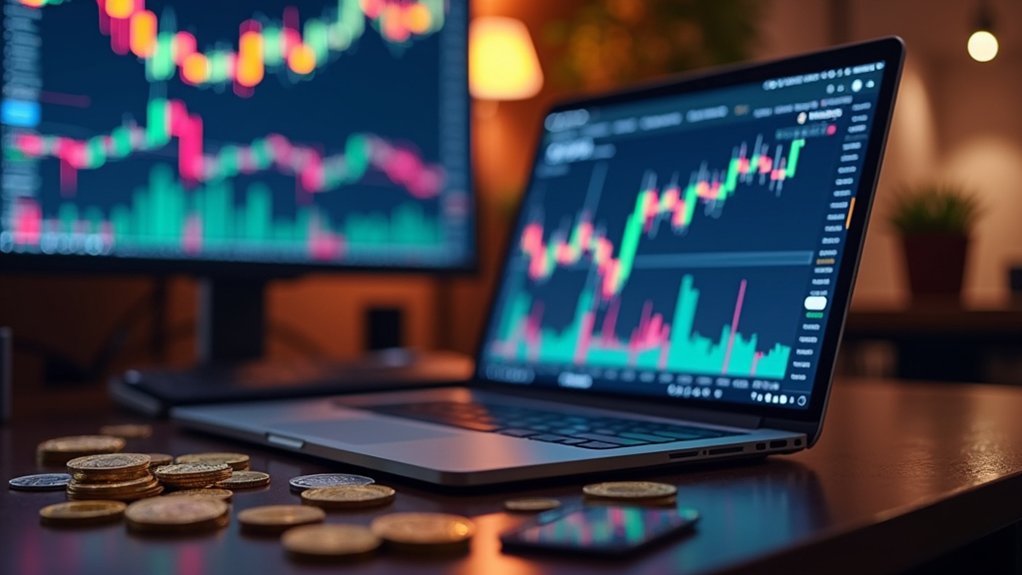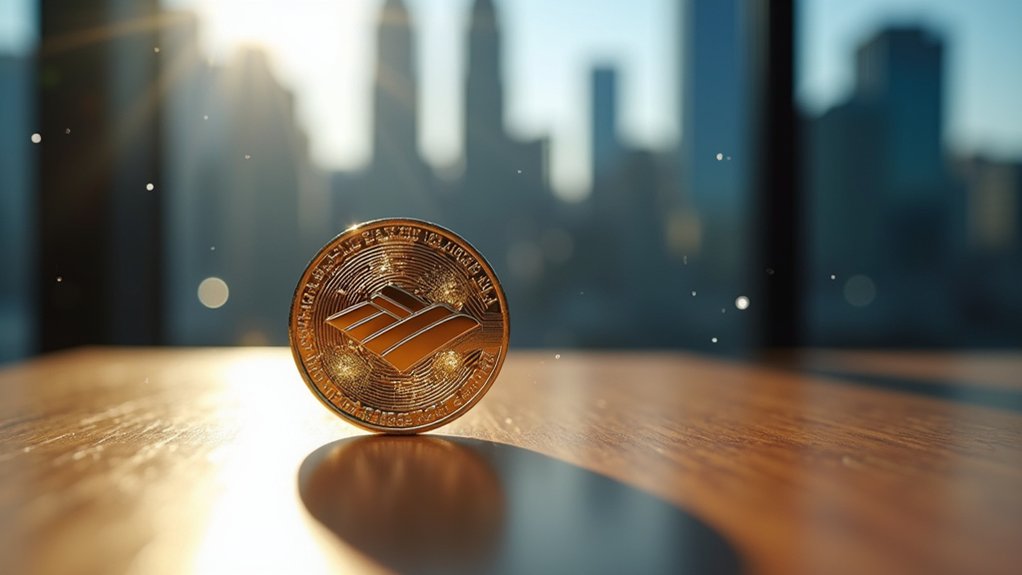ETFs, or exchange-traded funds, are investment tools that let you buy a mix of assets like stocks, bonds, or commodities. Think of them as a buffet for your portfolio—diverse, cost-effective, and easy to trade throughout the day. They’re hot right now, making up about 30% of U.S. fund assets. But don’t think they’re without risks; prices can swing wildly, and some ETFs are downright risky. Curious about what makes them tick? Keep going.

When it comes to investing, many folks find themselves drowning in options. Enter ETFs, or exchange-traded funds, the superhero of the investment world. They’re like mutual funds but cooler. An ETF is a fund that trades on stock exchanges, holding a basket of assets like stocks or bonds. It’s the buffet of investments. Want stocks? Check. Bonds? You got it. Commodities? Sure, why not!
ETFs are the investment buffet—stocks, bonds, commodities—served up cool and easy on the stock exchange!
The purpose of ETFs is to provide diversification. They can track various indexes or assets, which means you can spread your money around without having to buy a hundred different stocks. Plus, they’re generally cost-effective. Who doesn’t love saving a buck? Additionally, ETFs must be registered with the SEC, ensuring they meet regulatory standards. By late 2023, assets in ETFs grew to about 30% of total U.S. fund assets, demonstrating their increasing popularity among investors. ETFs offer diversification by allowing investors to gain exposure to a wide range of securities through a single investment.
Unlike mutual funds, which are bought and sold at the end of the day, ETFs are traded throughout the day like stocks. This means you can adjust your portfolio on the fly—perfect for those who can’t sit still.
Now, let’s talk about the types of ETFs. There are stock ETFs, bond ETFs, commodity ETFs, and even sector ETFs focusing on hot industries like tech. If you’re feeling adventurous, there are leveraged ETFs that promise to amplify returns—just remember, higher risk usually comes with a side of panic.
ETFs are pretty tax-efficient, too. They often come with lower turnover rates, which means fewer capital gains distributions. In plain English: less tax headaches. Transparency is another perk; ETF holdings are disclosed daily. You know exactly what you’re getting into.
But it’s not all rainbows and butterflies. ETF prices can swing wildly, reflecting market volatility. Some might have low trading volumes, making it tricky to buy or sell without losing money.
And tracking errors can occur, deviating from the index they claim to follow.
Frequently Asked Questions
How Are ETFS Different From Mutual Funds?
ETFs and mutual funds? Totally different beasts.
Mutual funds are like that overachieving friend who’s always trying to outperform the market—good luck with that. They come with hefty fees because of all that active management.
ETFs, on the other hand, are the chill ones. They track indexes, have lower fees, and trade like stocks.
Want flexibility? Go with ETFs. Want to pay more and hope for the best? Enjoy your mutual fund!
Can I Buy ETFS on Margin?
Yes, you can buy ETFs on margin. It’s like borrowing money to supercharge your investments.
Sounds great, right? But hold on. You’ll pay interest on those borrowed funds, and if things go south, losses can hit hard.
Maintenance margins usually hover around 25%, but if you’re dealing with leveraged ETFs, expect a steeper hill to climb.
Bottom line? Margin trading can be thrilling, but it’s a risky game. Proceed with caution!
What Are the Tax Implications of ETFS?
Tax implications of ETFs? Oh joy.
They’re taxed based on how long you hold them. Short-term gains? Enjoy paying up to 40.8%. Long-term? A bit nicer at 23.8%.
But wait—dividends? Those can hit you too, varying by type.
Then there are precious metals and commodities with their own quirky rules.
What Fees Are Associated With Investing in ETFS?
Investing in ETFs? Get ready for some fees.
First up, the expense ratio—think of it as the annual fee for your fund. It can be as low as 0.03% or over 1%.
Then there are management fees, trading commissions, and those pesky bid-ask spreads. Some brokers might even hit you with inactivity fees.
Sure, ETFs are usually cheaper than mutual funds, but don’t ignore the costs lurking in the shadows. Always check!
How Do I Choose the Right ETF for Me?
Choosing the right ETF? It’s like picking a favorite child—tricky.
First, know what you’re after. Do you want growth or safety?
Then, check the fees—because who wants to lose money to hidden charges?
Look at liquidity; nobody likes a sluggish investment.
And hey, make sure it tracks something relevant.
Finally, diversify! Don’t put all your eggs in one basket, unless you enjoy a dramatic financial meltdown.
Simple, right?





